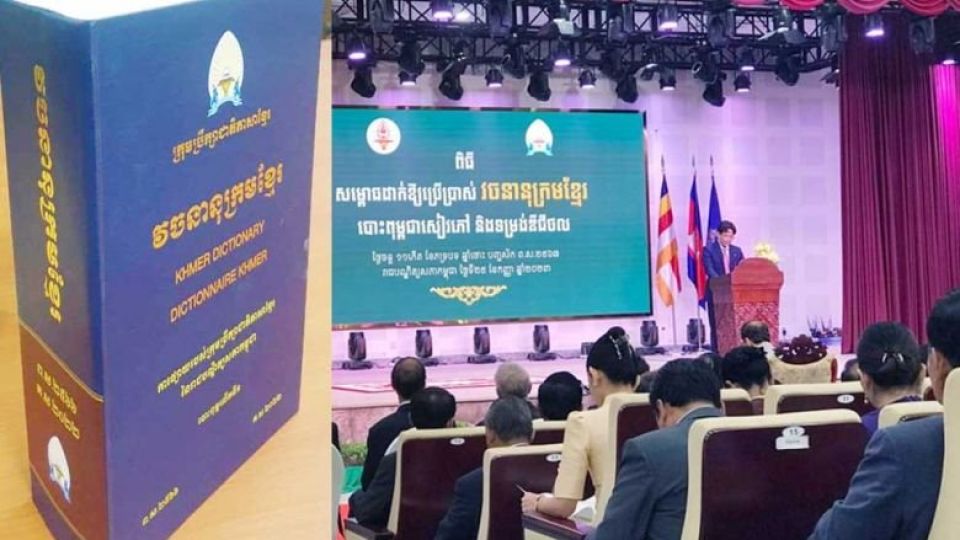September 27, 2023
PHNOM PENH – The National Council for Khmer Language (NCKL) has announced the publication of an updated Khmer dictionary. Available in both book form and a digital format that can be used on mobile phones and computers, the compiling of the dictionary was completed last year.
The launch took place on September 25 at the Royal Academy of Cambodia (RAC), in a ceremony presided over by Vongsey Vissoth, deputy prime minister in charge of the Council of Ministers. Also present were RAC president Sok Touch and NCKL chief Hean Sokhom.
Sokhom explained the process of preparing the updated dictionary, stating that the compilation spanned five years from 2018 to 2022. It was a collaborative effort, involving 65 members of the National Committee for Khmer Dictionary, whose members encompass intellectuals of various generations, including monks, each of whom possess individual specialisations in linguistics, literature, history or economics.
He said the Khmer language has been evolving continuously for over half a century since the 5th Khmer dictionary’s two-part publication in 1967 and 1968. Many words remained absent from the dictionary, so the process of updating it was ongoing.
He added that its publication is in response to the needs of Khmer language users and aligns with Cambodia’s societal landscape in the realms of economics, science and information technology, within the framework of globalisation. The undertaking represented a continuation of reverence, affection and preservation for the lexical heritage of all generations, and was particularly championed by former Prime Minister Hun Sen.
“The dictionary is available in both printed and digital formats. The creation of a digital version enhances its efficiency, user-friendliness, widespread accessibility and the ease of incorporating new words. The current Khmer dictionary comprises a total of 44,697 words, 31,073 of them classified as primary,” he said.
“The purpose of the dictionary is to update and modernise the existing edition, promoting harmonious use of the Khmer language. Its guiding principle is to preserve the original form,” he added.
The words were collected chronologically, both as they were used in written documents and within other realms of usage.
A database of Khmer words from previous editions of the dictionary and newly coined terms serves as a versatile repository for various purposes.
He acknowledged several challenges, including issues related to human resources, time constraints, Covid-19 impact and technical limitations.
Vissoth commended the council for their direct and contributions to the preservation and advancement of Khmer literature of historical significance.
“The necessity and urgency of updating and modernising the dictionary was driven by the needs of Khmer language users who rely on comprehensive definitions for their writing and reading,” he explained.
He added that in the era of the Fourth Industrial Revolution, or Industry 4.0, the national language must also evolve and expand, by developing a substantial and diverse vocabulary. This expansion is essential to meet the timely and efficient communication needs of its users.
“National language and literature are integral to our cultural identity as a nation. The publication of the Khmer Dictionary 2022 is a vital response to the urgent need for the development and preservation of our national language, which in turn strengthens our society,” he said.
During the ceremony, Touch noted that the RAC, which was re-established in 1999, is regarded by the government as a “National Brain Bank”, bringing together numerous intellectuals for scientific and academic research.
“For over two decades, the RAC has actively pursued its mission, conducting extensive research and providing valuable insights to the government and various institutions. We’ve also fostered strong collaborations with research institutions, national and international universities, including those within ASEAN and the Asia-Pacific region,” he said.
The first Khmer dictionary, known as the “Dictionary of Samdech Preah Sangkhareach Chuon Nath”, was originally published in 1938.
A publication of the Buddhist Institute, it has served as the official Khmer dictionary to date and remains an invaluable resource.


